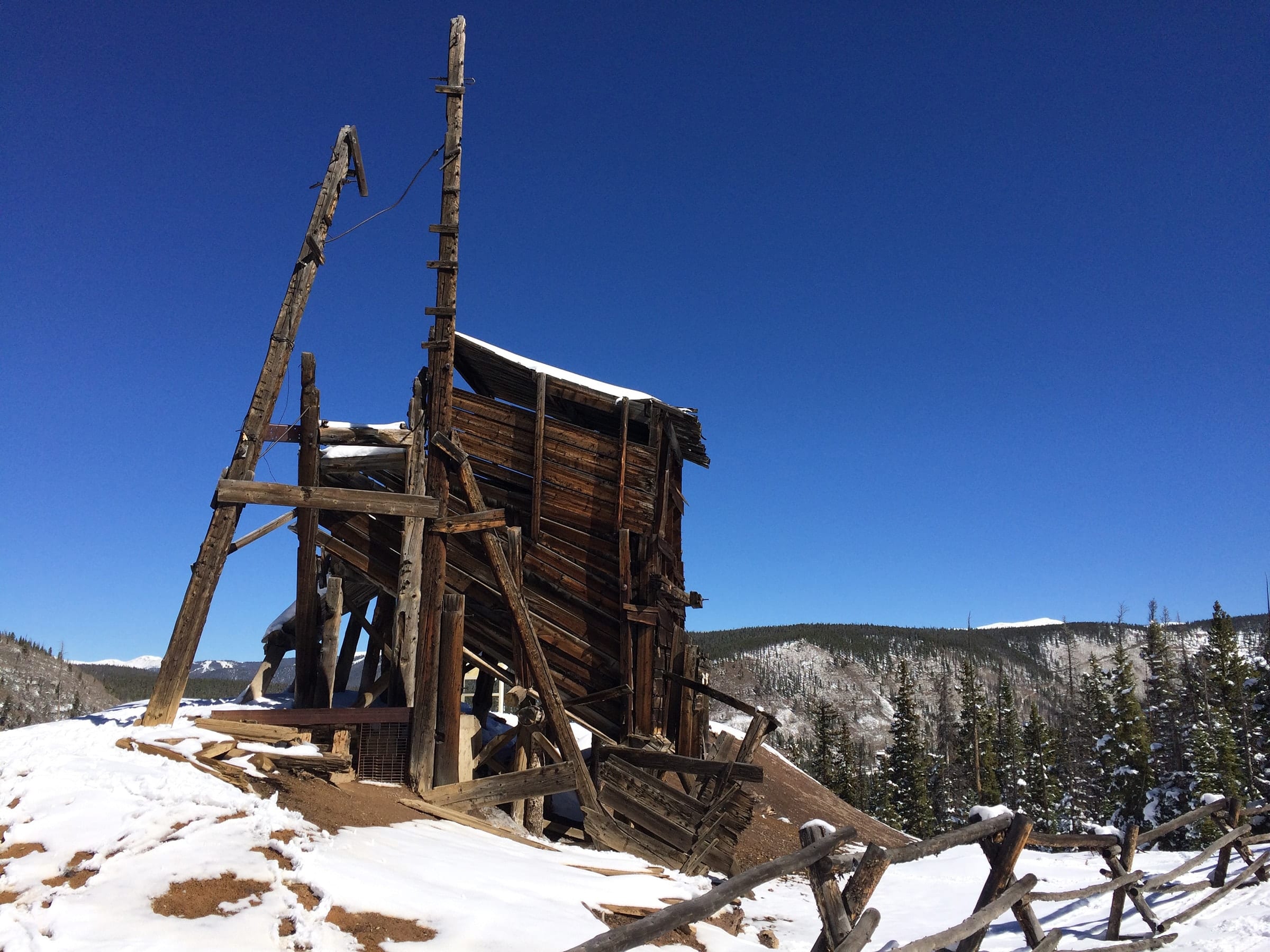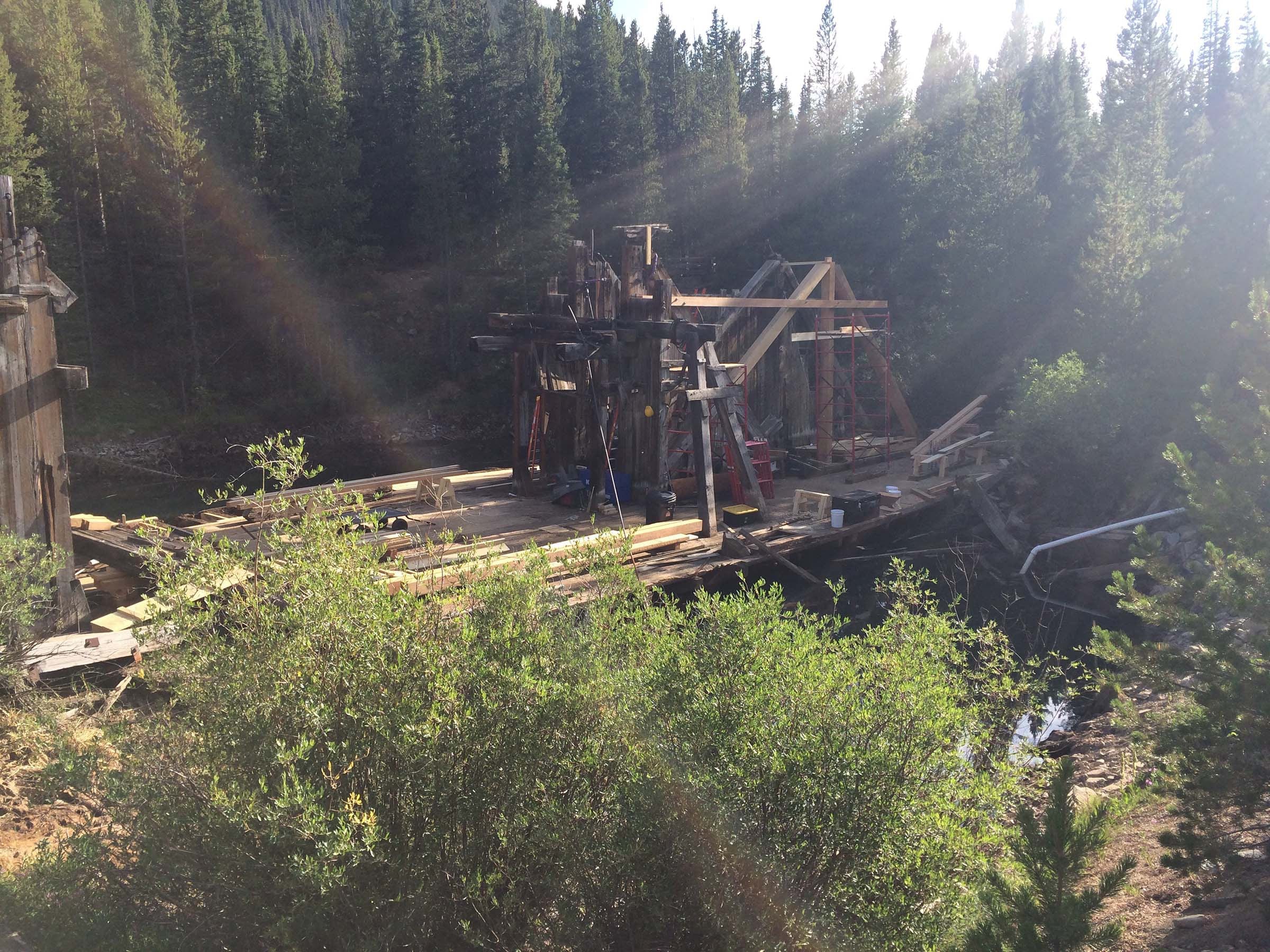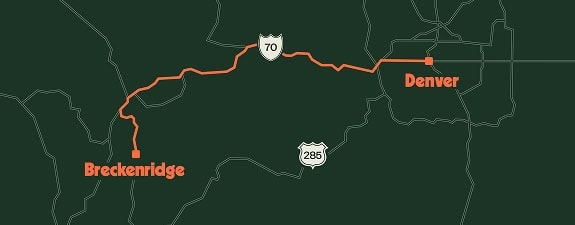Anywhere you hike around Breckenridge you are likely to stumble upon historic buildings, old mine workings and historic sites thanks to our rich mining history dating back to Breckenridge’s beginnings in 1859. Enjoy a saunter through the woods to discover relics from our past. We’ve chosen a few of our favorite historic hikes to highlight in chronological order by approximate date of mine workings. Remember, take only photographs and leave any artifacts for others to enjoy.
Iowa Hill

The first prospectors in Breckenridge were gold-panners, finding free gold in river and stream beds using the action of water to clean rocks and debris from the heavier gold in the bottom of the pan. The hydraulic mining techniques at Iowa Hill blew up the original gold pan method on a gargantuan scale, using high pressure water from pipes to blast away acres of hillsides in search of gold. Muck was funneled into sluice boxes to capture the precious metal.
Mining began at Iowa Hill in the 1860’s, and a wide variety of gold-saving innovations developed over the years can be seen here. Numerous interpretive signs along the way provide more information. The trail climbs up the washed-out hillside, though you’ll hardly notice the ascent with all the interesting things to look at: blacksmith shop, guard house, derrick, and shaft. Don’t miss the interpretive side trail that leads to the head of the wash where you’ll see large diameter pipes that carried water to the “giant,” the working end of the hose that blasted away the mountain.

Continue up the main trail to view an original ore cart on your way to the 1870’s-era boarding house at the top of the hill. Peek in the windows to see how miners lived, or sign up for a guided historic tour with the Breckenridge Heritage Alliance. On the official tour, you’ll learn more about Iowa Hill and enjoy a tour inside the boarding house building.
Gold Run Road to the Jessie Mill and Preston Ghost Town
As the easy gold began to play out, a new form of mining took over when the train arrived in 1882: lode mining. Instead of searching for free gold loosened by erosion, miners could burrow into the mountain-side in search of the source vein. Railroads allowed importation of the heavy equipment required to drill into the hard rock and process out the gold: steam boilers, power drills, filters and milling apparatus.
The Jessie Mill is a classic example of a Breckenridge mill site. On the hillside above the mill, the mine workings can be seen: giant caverns, tunnels, and collapsed adits. An interpretive sign explains how the Jessie milled the gold out of the ore. A railroad siding came to this spot, increasing efficiency and profits for the mine operation.
Continue past the Jessie on Gold Run Road toward the ghost town of Preston. On the way, you’ll pass the Extension Mill, a smaller version of the Jessie. Unique to this site is the Portland Filter, a cylindrical piece of equipment that used centrifugal force to extract the gold from the slurry of water, crushed ore and cyanide.
All that remains of Preston today are a few log cabins and fallen buildings, but it is still easy to imagine the bustling town that existed here almost 150 years ago. In the 1870’s Preston was booming with 150 residents, a post office, and enough women around to support a dress shop and millinery.
Return via the Gold Run Road for a 3-mile round-trip hike. A guided historic hike to the Jessie Mill and Preston is available with Breckenridge History.
Sallie Barber

Breckenridge’s mining history is dominated by gold, but a few silver mines also existed in the Breckenridge area, including long-time operator, The Sallie Barber Mine. During World War II, when Federal Order L-208 shut down all gold mining as “nonessential” to the war effort, the Sallie Barber continued to operate, pulling lead and zinc from the deep shaft. The shaft is covered with a grate now for safety, but you can still drop a rock down the hole and listen for how long it takes to hit bottom. Interpretive signs explain the mine’s history, the many steam boilers on site, and the views from the tailings pile.
On the way up the trail, you’ll pass an area full of rocks, devoid of soil and plant life. This area was hydraulically mined in the manner of Iowa Hill.
Sallie Barber Road is closed to motorized vehicles and offers great views along the trail as you make your way to the historic sites. The hike is about 5.5 miles round trip.
Aspen Alley
A thick forest of aspen trees dominates the hillside, making it a favorite destination in the fall to view the golden colors. History hunters will enjoy this hike any time as the trail winds past old lode claims, one of the few Breckenridge ore carts still remaining in its native location, and a hulking steam boiler marking a significant mine site. Start at the Sawmill Museum to learn more about this important creator of posts, beams, siding and other dimensional lumber necessary to a booming mining community.
The trail is about 1.5 miles one way, terminating at the junction with Boreas Pass Road.
Reiling Dredge / B&B Trail / Minnie Mine Loop

Around the turn of the century – the 20th Century – hydraulic mining made a come-back, but this time in the form of gold dredge boats that dug up the river beds in search of the free gold that had sunk to bedrock. Leaving huge piles of rock in their wake, the 9 dredge boats that operated in the Breckenridge area destroyed acre upon acre of valley bottom while making the mine owners very rich. The Reiling Dredge is still very much intact today, and recently enjoyed a sprucing up. The Breckenridge Heritage Alliance stabilized the Reiling Dredge in 2018 to stave off further decay.

Several loops are available in the French Gulch area that take you past the Reiling Dredge, Wellington Oro Bin, Traylor Shaft, and the Truax, Extenuate (X10U8), and Minnie Mines. Check out the trail and parking options at this link.
Wellington Trail to Depression Era Workings
Desperate workers came to Breckenridge in the 1930’s hoping to find enough gold to avoid starvation by re-working the old mine sites and tailings. Relics of Depression-era gold-seeking, cobbled together from old truck beds and scavenged mining parts, can be seen along the Wellington Trail. Their innovation and creativity in face of hardships is still inspiring today.
Find out more about how to visit these historic sites without a car in Breckenridge or explore town to visit the oldest buildings in Breckenridge.


